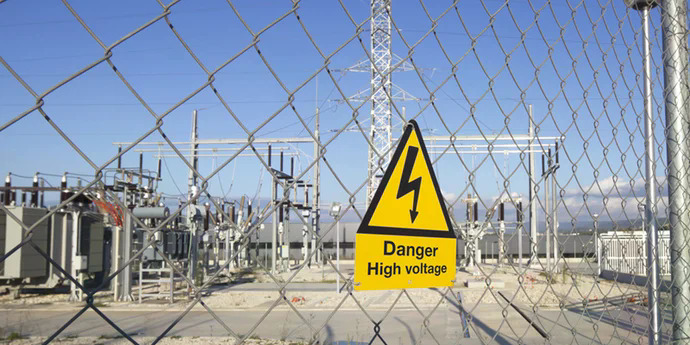Electrical injuries are among the most serious hazards in industrial environments, as they can cause burns, cardiac complications, or even death. Electricians, maintenance technicians, and other personnel working with electrical systems are particularly at risk.
Sources and Risks of Electric Shock
In industrial settings, electric shock can be caused by:
- Worn or exposed electrical cables
- Poor grounding of equipment
- Tools with defective insulation
- Contact with wet surfaces near live circuits
- Careless operation of machinery without prior power disconnection
- Flash arc
Most electrical injuries result not from direct contact, but from poor maintenance or improper practices—such as failing to apply proper signage during maintenance or skipping lockout/tagout procedures.
How Electric Current Affects the Human Body
Electric current can affect the body in three main ways:
- Thermal energy (burns): Electricity generates heat that can burn skin or internal tissues.
- Cardiac effects: It may cause arrhythmias or cardiac arrest by disrupting the heart’s rhythm.
- Loss of control and falls: Sudden spasms or shock can cause secondary injuries due to falls.
Managing Electrical Burns and Electrocution
- Rescuer safety: Before approaching the victim, ensure the power source is disconnected. If this is not possible, the rescuer must wear insulated gloves and boots or use a non-conductive object (e.g. wooden stick) to move cables.
- First aid:
- Check breathing and pulse immediately
- If absent, apply artificial respiration and chest compressions
- Cool any burn areas with clean, cold water
- Cover burns with a sterile, non-fluffy dressing
- Notification of an ambulance in case of a serious incident
When Hospitalization Is Necessary
Immediate medical evacuation is required if:
- The shock involved voltage greater than 1000 volts
- The victim is unconscious or shows signs of confusion
- There are visible burns or irregular heartbeat
- Neurological symptoms are present (e.g. slurred speech, unsteady walking)
Prevention and Training
Proper prevention includes:
- Staff training on electrical hazards
- Mandatory use of personal protective equipment (PPE)
- Strict adherence to lockout/tagout protocols before any electrical work
- Regular inspection and maintenance of electrical systems

